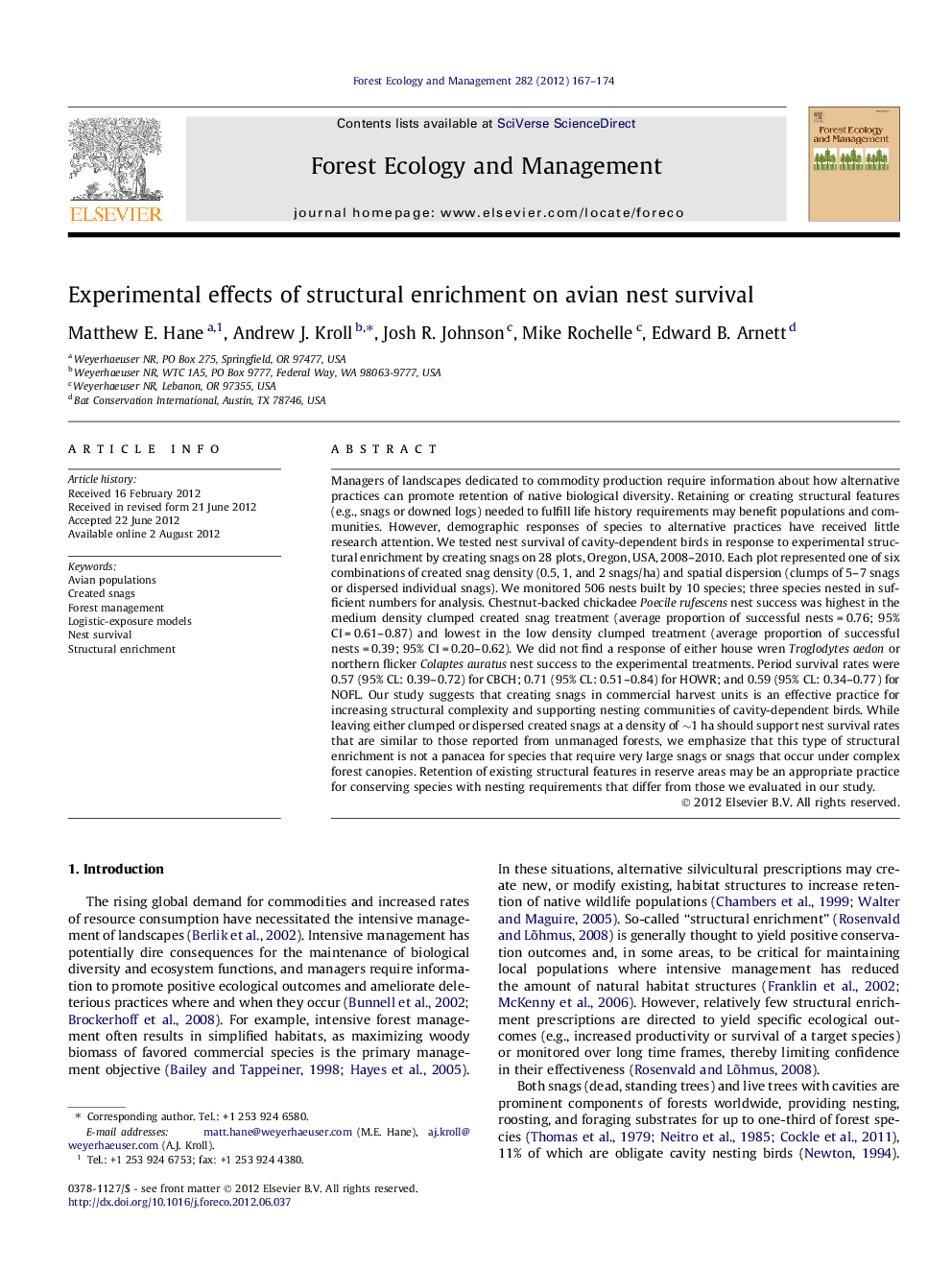| Article ID | Journal | Published Year | Pages | File Type |
|---|---|---|---|---|
| 87431 | Forest Ecology and Management | 2012 | 8 Pages |
Managers of landscapes dedicated to commodity production require information about how alternative practices can promote retention of native biological diversity. Retaining or creating structural features (e.g., snags or downed logs) needed to fulfill life history requirements may benefit populations and communities. However, demographic responses of species to alternative practices have received little research attention. We tested nest survival of cavity-dependent birds in response to experimental structural enrichment by creating snags on 28 plots, Oregon, USA, 2008–2010. Each plot represented one of six combinations of created snag density (0.5, 1, and 2 snags/ha) and spatial dispersion (clumps of 5–7 snags or dispersed individual snags). We monitored 506 nests built by 10 species; three species nested in sufficient numbers for analysis. Chestnut-backed chickadee Poecile rufescens nest success was highest in the medium density clumped created snag treatment (average proportion of successful nests = 0.76; 95% CI = 0.61–0.87) and lowest in the low density clumped treatment (average proportion of successful nests = 0.39; 95% CI = 0.20–0.62). We did not find a response of either house wren Troglodytes aedon or northern flicker Colaptes auratus nest success to the experimental treatments. Period survival rates were 0.57 (95% CL: 0.39–0.72) for CBCH; 0.71 (95% CL: 0.51–0.84) for HOWR; and 0.59 (95% CL: 0.34–0.77) for NOFL. Our study suggests that creating snags in commercial harvest units is an effective practice for increasing structural complexity and supporting nesting communities of cavity-dependent birds. While leaving either clumped or dispersed created snags at a density of ∼1 ha should support nest survival rates that are similar to those reported from unmanaged forests, we emphasize that this type of structural enrichment is not a panacea for species that require very large snags or snags that occur under complex forest canopies. Retention of existing structural features in reserve areas may be an appropriate practice for conserving species with nesting requirements that differ from those we evaluated in our study.
► Few studies have examined population responses to structural enrichment. ► We tested avian responses to experimental structural enrichment by creating snags. ► Cavity-nesting birds responded to snag density but not spatial pattern. ► Created snags should support nest survival rates similar to unmanaged forests.
